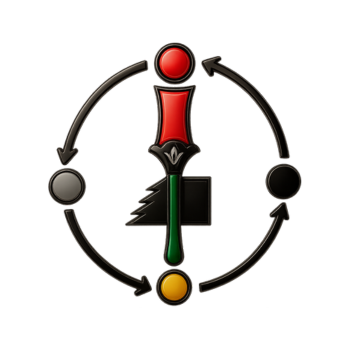-
Adelaide Casely Hayford (1868 – 1960) was one of the first Afrikan women to pioneer women’s education that rejected colonial methods, emphasised Afrikan talents and nurtured a pride in traditional culture. She was also the first Afrikan woman to make a lecture tour of the United States. One of seven children Adelaide moved with her family to London around 1872. Later she was sent to study at the ladies college on the island of Jersey and at the age of seventeen went to Germany to study music.
Returning to Freetown around 1892, she became a teacher at a Methodist School and in 1897 had set up an elementary girls school with her sister Emma. She then returned to London in 1900, where after 3 years she met and married J.E.Casely Hayford who was a Lawyer and a leading Ghanaian Nationalist. In 1907 she joined her husband on the Gold Coast but unfortunately their marriage had ended around 1914 (although they never divorced) and she returned to Sierra Leone to take up local community work in Freetown.
In 1915 she expressed her interest in women’s education in a speech she had gave as President of the Young Women’s Christian Association entitled ” The Rights of Women and Christian Marriage”, elaborating on her vision of a Afrikan run school for girls that emphasised traditional Afrikan culture and arts and provided vocational training. In 1923 in Freetown, she had finally began fundraising for her Girls Vocational and Industrial Training School assisted by her niece Kathleen Easmon.
In 1920 – 1925 and then again in 1926 – 1927 she also toured the United States, speaking at Radcliffe and Bryn Mawr Colleges, visiting black schools in Alabama and Georgia and raising more money for her own school. The school eventually opened up in around 1925 – 1926 with Adelaide affirming it’s objectives as being to offer ” an education which would instil into a love of country, a pride of race, an enthusiasm for a black man capabilities and a genuine admiration for Afrika’s wonderful art work. She was assisted in school administration by her daughter Gladys, but in 1940 a combination of age, insufficient funding and the difficulties of educating children during wartime is said to have forced her to close the school down.
In 1925, she caused a huge scandal by wearing a traditional Sierra Leonian dress which at that time was unheard of to a reception for the Prince of Wales but in the end she was made a member of the order of the British Empire (MBE) in around 1949. Inspired by the teachings of Marcus Mosiah Garvey throughout her life, she had joined the ladies division of the UNIA eventually rising to be the President. Throughout her work as President, she had throughout her life encouraged Afrikan people to take pride in their colour and their culture.
1 Comment-
Beautiful dynamics of love in action!
-

